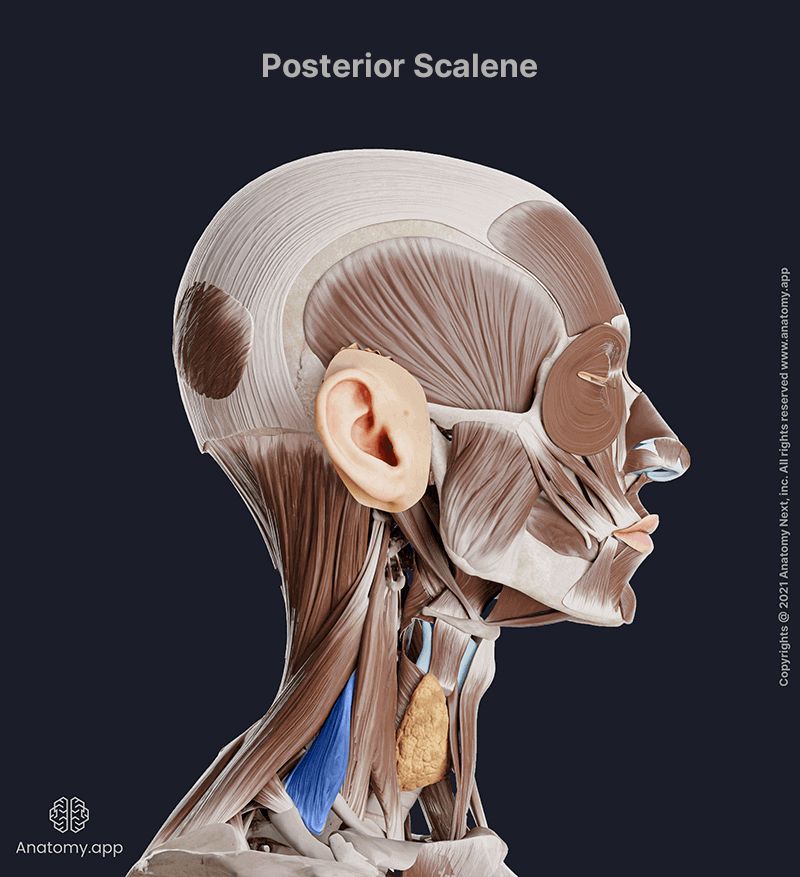- Anatomical terminology
- Skeletal system
- Joints
- Muscles
- Head muscles
-
Neck muscles
- Superficial neck muscles
- Scalene muscles
- Suprahyoid muscles
- Infrahyoid muscles
- Prevertebral muscles
- Suboccipital muscles
- Muscles of upper limb
- Thoracic muscles
- Muscles of back
- Muscles of lower limb
- Heart
- Blood vessels
- Lymphatic system
- Nervous system
- Respiratory system
- Digestive system
- Urinary system
- Female reproductive system
- Male reproductive system
- Endocrine glands
- Eye
- Ear
Posterior scalene
The posterior scalene (Latin: musculus scalenus posterior) is a muscle of the neck located in its lateral aspect. Therefore, it is also known as one of the lateral neck muscles. The posterior scalene is classified as the muscle of the scalene group. It is the smallest muscle of the group and is situated most profoundly.
| Posterior scalene muscle | |
| Origin | Posterior tubercles of transverse processes of C5 - C7 vertebrae |
| Insertion | External surface of second rib |
| Action | Unilateral contractions - neck lateral flexion (ipsilateral), neck rotation (contralateral), elevation of second rib Bilateral contractions - neck flexion |
| Innervation | Anterior rami of 6th to 8th cervical spinal nerves (C6 - C8) |
| Blood supply | Ascending cervical artery, superficial cervical artery |
Origin
The posterior scalene muscle originates from the posterior tubercles of the transverse processes of the 5th to 7th cervical vertebrae (C5 - C7).

Insertion
The posterior scalene inserts on the external surface of the second rib.
Action
By contracting on both sides, the posterior scalene muscle flexes the neck. By contracting on one side, it bends the neck laterally to the same side (ipsilateral). Also, unilateral contractions provide contralateral neck rotation and elevation of the second rib.
Innervation
The posterior scalene is innervated by the anterior rami of the 6th to 8th cervical spinal nerves (C6 - C8).
Blood supply
The posterior scalene muscle receives arterial blood supply from the ascending cervical branch of the inferior thyroid artery and the superficial cervical branch of the transverse cervical artery.